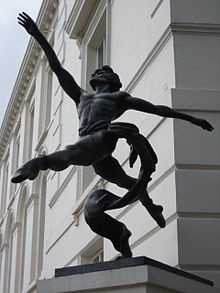
High definition television has created new opportunities for theatre and music lovers in outposts like
Holmfirth to see the world's great opera, ballet and theatre companies without the expense and inconvenience of traipsing down to London - or indeed other metropolises such as St. Petersburg and New York. Doubtless it has also created opportunities for those companies to develop new income streams and indeed new audiences.
Over the last 12 months I have watched performances of the Bolshoi and the Met streamed live from Moscow and New York to the
National Media Museum in Bradford (a great national asset threatened with closure that we really must save), the
Royal Ballet's Nutcracker in Wakefield and, yesterday, the
Mariinsky Ballet in Swan Lake in Huddersfield. It is not the same as watching the companies on the stage. As
Tamara Rojo said when interviewed on
BBC Radio's Broadcasting House just before Christmas "It's a different experience." But not necessarily an inferior one. The cameras go where audiences don't such as the orchestra pit when the maestro waves his raises his baton or in the case of
Valery Gergiev his hands. They interview the stars and, in some cases, the composers, conductors, designers, directors and technicians behind the production which provides valuable insights not only into the show but also the work. The New York Met deserves particular commendation in that regard.
Yesterday the ballet was streamed to some audiences in 3D. I got to see it in 2D but that was still good enough. The transmission opened with an interview with Gergiev and
Yekaterina Kondaurova (Odette-Odile) from the
new Mariinsky about which I blogged last month. The ballet was danced on the original stage but an audience in the new auditorium watched it in 3D. It is a rare pleasure to hear a ballerina speak, especially Kondaurova who has a good command of English. The transmission then switched across the road to the Mariinsky foyer where Yorkshireman (not everybody and everything of value in British ballet comes from London,
Cheryl)
Xander Parish was interviewed. He danced one of Siegried's friends.
The Mariinsky had rolled out its top team for the world's admiration. Kondaurova was magnificent as was his partner
Timur Askerov. Odette-Odile is a split role requiring considerable dramatic as well as balletic skill to transform from sweet swan to shameless imposter. Not every ballerina can combine those roles but Kondaurova is one who can. My favourite bit of any Swan Lake is
Legnani's 32 fouettés and Kondaurova executed them exquisitely. Special praise also go to
Vasily Tkachenko who danced the jester. The Mariinsky has produced the legendary male dancers
Nijinsky,
Nureyev and
Baryshnikov. In Tkachenko I think we will see another.
Having been brought up on the Royal Ballet's version I missed Fred Ashton's charming Neapolitan divertissement but the end of the Mariinsky's Swan Lake was so much more satisfying than most versions. Instead of the lovers jumping into the lake and sailing off to Heaven Siegfried tore a lump out of Von Rothbart (danced brilliantly by
Andrei Yermakov) who writhed convincingly on the floor as the swans broke free.
St Petersburg is one of the great cities of Europe I have still to visit and the clips of the city in the two intervals were stunning. "We have to go there" I whispered to my foodie friend. And although
borsht isn't doesn't appeal to either of us are now saving our pennies to see Theatre Square for ourselves.
 In the obituaries and news reports that I have seen today Wall is remembered for partnering Margot Fonteyn but he also danced with the other great ballerinas of the day. My memory of him is dancing Romeo with Lynn Seymour and fortunately someone has posted a clip of the bedroom scene from Romeo and Juliet on YouTube. No doubt a lot of people like me will watch that pas de deux with glistening eyes.
In the obituaries and news reports that I have seen today Wall is remembered for partnering Margot Fonteyn but he also danced with the other great ballerinas of the day. My memory of him is dancing Romeo with Lynn Seymour and fortunately someone has posted a clip of the bedroom scene from Romeo and Juliet on YouTube. No doubt a lot of people like me will watch that pas de deux with glistening eyes.

